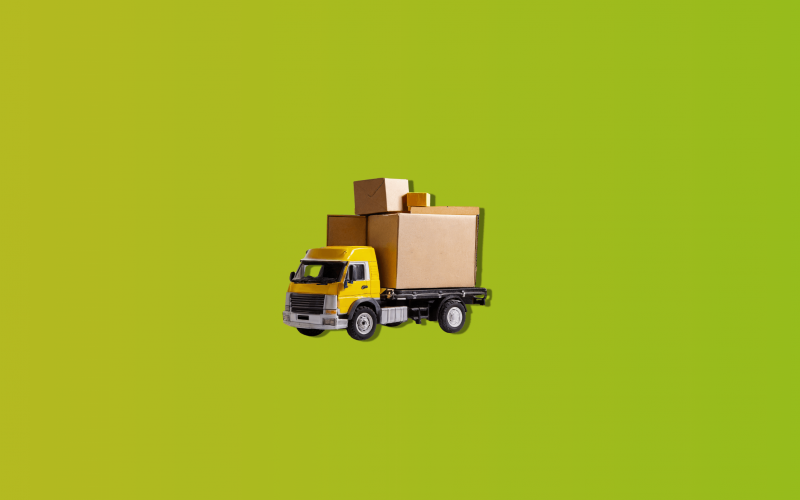If you’re looking into ecommerce shipping software, you understand the rewards of self-fulfillment. Chances are, you’re tired of having no control over delivery times or customer experience. You want to do better than competitors who outsource shipping to 3PLs.
You’ve come to the right place.
In this article, we’re taking a close look at shipping software for ecommerce. Read on to explore the full potential of self-fulfillment and choose your fighter in the battle for customers’ loyalty.
Contents:
1. To outsource or not to outsource?
2. Benefits of using ecommerce shipping software for self-fulfillment
3. Shipping software solutions for ecommerce
4. How to choose the best shipping software for ecommerce?
5. Top-3 shipping software vendors for ecommerce
To outsource or not to outsource?
That is the question.
Every ecommerce store owner has to consider the shipping dilemma. Do you outsource last-mile delivery to a third-party carrier or do it yourself?
Both options come with pros and cons. Let’s consider outsourcing to a 3PL – the go-to choice of many ecommerce store owners.
- Convenience vs. poor sense of control.
- Ease of setup vs. delivery mistakes.
- Bigger area coverage vs. limited visibility.
Self-delivery, on the other hand, is risky and entails extra costs. But it also comes with having full control of the delivery experience.
Let’s take a closer look at the benefits of using ecommerce shipping software for self-delivery.
Benefits of using ecommerce shipping software for self-fulfillment
What does it mean exactly, to “have full control of the delivery experience”? We start at the beginning.
Delivery times
Ecommerce buyers want free and fast shipping. While free shipping impacts sales, fast shipping impacts customer retention and loyalty.
If you’re not able to deliver on time, you lose trust points. And on time delivery (OTD) is hard to guarantee when you outsource shipping to a 3PL or opt for dropshipping in favor of cutting costs.
When you opt for self-fulfillment with ecommerce shipping software, you can optimize delivery speed. Having your own trucks and drivers means you can guarantee fast shipping and on time delivery, every time.
Visibility
“Where is my order and when will it arrive?” has to be the most time-consuming and yet easily avoidable question an ecommerce store owner can get.
When delivery times are unclear and order status updates are lacking or scarce, customers get anxious. When customers get anxious, they start making calls and/or writing emails.
The reality of outsourced shipping is that customers will still contact your store to ask about the status of their orders. And all you have as a store owner is the same tracking number the carrier shared with the customer.
In self-fulfillment, you know exactly where your drivers are. With shipping notifications and live tracking, you can completely eliminate inquiries about order status, more on that later.
Accountability
As long as ecommerce shipping involves human involvement, delivery mistakes will happen. Wrong address, wrong item, no one home – the list of reasons continues.
It can be hard to keep a 3PL accountable, especially when there’s a lack of transparency in the delivery process. When you handle shipping yourself, there’s a greater sense of ownership on all accounts.
By keeping a clear record of the fulfillment process and storing your delivery documentation in one place, you can improve accountability and avoid many misunderstandings and disputes.
Peace of mind
“Outsource and forget” might seem like a lucrative approach. In reality, you rarely get to remove yourself from the shipping process as customers still see you as the main point of contact.
Having full control of the delivery process, and assuming the responsibility for it, brings you closer to the peace of mind you were seeking in the first place.
The benefits we discussed above all result in a sense of control. When you can efficiently plan the shipping process and deliver on time, you get happy customers and a good night’s sleep.
Shipping software solutions for ecommerce
Now that we’ve reviewed the benefits of using shipping software for ecommerce, let’s look at the specific solutions that make these benefits possible.
Route planning with ETAs
How do you improve delivery times? You get better at multi-stop route planning.
Getting better at route planning is about knowing exactly when your drivers will arrive at each location. Considering travel and service times, you can plan perfectly optimized routes and meet your estimated time of arrival (ETA) and departure (ETD).
Routing ecommerce orders is all about respecting your customers’ preferred time windows. Shipping software uses advanced route optimization algorithms to consider all of these factors and come up with the best possible routes for each driver.
Scannable shipping labels
Shipping labels from carriers is something ecommerce store owners are well familiar with. Shipping software allows you to create and print custom shipping labels from a template.
Among the elements you can include are QR and barcodes which can be scanned by drivers before each route. By scanning unique barcodes for every item, drivers can avoid delivery mistakes.
The good news is that you don’t need to invest in additional scanner devices. A barcode scanner app is part of the best ecommerce shipping software. Any smartphone can be turned into an industrial-grade barcode scanner with the right software solution.
Live tracking notifications
Automated customer communication is one of the biggest time savers that ecommerce shipping software can provide. By sending timely updates on order status with live tracking links, you can keep customers informed while minimizing calls and emails.
Instead of contacting your customer support or sales team, buyers can click on the link in an SMS or email notification about order status.
Following delivery progress in real time improves delivery success rate as customers are more likely to be at home when their orders arrive. It’s a win-win because you save time on answering calls and customers know exactly where their orders are.
Custom branding
Consistent branding is one thing you’re missing out on if you choose to outsource shipping to a 3PL. Customers will interact with the carrier’s brand, which can lead to confusion and frustration.
Shipping software for ecommerce makes it possible to communicate your brand at all stages of order fulfillment. Customize your notifications, live tracking page, invoices, and delivery confirmation documents to present a consistent brand image.
Online buyers interact with dozens of brands every day. Being memorable is all about consistency in communicating your brand. You can go as far as branding your trucks and drivers’ uniform, but shipping software gives you customization options with no additional investment.
Proof of delivery
If there can be a single source of truth when it comes to ecommerce shipping, it has to be your delivery documentation. Knowing when and how each order was paid for and delivered is crucial for the health of your online store.
Electronic Proof of Delivery (ePOD) is a process of collecting delivery confirmation and storing it in the cloud. It can be photos, e-signatures, timestamps, PIN codes, or other forms of delivery confirmation.
What’s important is that your drivers document delivery and you instantly have an electronic document to prove it. You can share the ePOD with customers via automated notifications to avoid disputes.
How to choose the best shipping software for ecommerce?
Choosing the best shipping software for ecommerce is all about understanding your needs. When you know your needs, you can identify solutions and use them as pointers to inform your choice.
There are 3 main considerations to make when researching ecommerce shipping software.
- Integration with your online store – how easy or complicated is the setup?
- Ready-to-use features – what you get out of the box vs. what you need to configure or pay for additionally.
- Pricing structure – do you pay per driver, per order, or both?
To save time, you can research software using native marketplaces like Shopify app store. Then you can be sure the software integrates easily with your ecommerce platform of choice.
In terms of the licensing model, it helps to have flexibility, especially if you’re only getting started with self-delivery. For example, some software vendors require you to pay per vehicle/driver, some charge per task (with unlimited drivers), and some allow you to switch between these two licensing models.
Be pragmatic and find the level of flexibility that helps you minimize risks and maximize resource utilization.
Top-3 shipping software vendors for ecommerce
Last but not least, let’s quickly review some of the best ecommerce shipping software vendors by applying the above criteria: integration, out-of-the-box features, and pricing.
1. Track-POD
Track-POD shipping software comes at the top of the list because it checks all the boxes. It has native integrations with ecommerce platforms, offers all features out of the box, and boasts a flexible pricing structure, i.e. you can choose to pay per vehicle or per order.
Below is a list of core Track-POD features that will elevate any ecommerce shipping workflow.
- Instant order import from Shopify, WooCommerce, Linnworks, etc.
- Drag-and-drop, map-based route planning with ETAs.
- Custom shipping labels with unique scannable barcodes.
- White-label live tracking page for customers.
- Cash on delivery, PIN codes for delivery confirmation.
- Editable Proof of Delivery template with unlimited custom fields.
- 12-24 months of historical shipping analytics.
The best part of Track-POD is that there are no add-ons, hidden fees, or any complicated setup whatsoever. You can integrate your ecommerce store and dispatch your first orders within the same day.
Track-POD pricing
Per-vehicle pricing starts at just $29/mo with an annual contract. Per-order pricing starts at $0.12/task. A 7-day free trial is available; no credit card required.
2. Tookan
Tookan shipping software integrates easily with ecommerce platforms and offers robust features for local delivery management.
- Auto-assignment of deliveries based on availability, skill, performance, etc.
- Real-time tracking with ETAs.
- Shipping alerts with order status updates via SMS.
- Electronic proof of delivery with barcode scanning.
- Real-time analytics and metric reports.
In Tookan, not all features come out of the box, with add-ons available depending on your ecommerce shipping needs. For example, if you require route optimization, you’ll need to integrate Mappr – a standalone product.
Similarly, there are extra charges associated with ETAs, barcode scanning, email parsing, and other features. The final pricing will depend on how extensive your feature set needs to be.
Tookan pricing
Tookan charges per number of tasks a month with unlimited drivers and vehicles, starting at $39/mo for 200 tasks (annual contract). A 14-day free trial is available; no credit card required.
3. Shipday
Shipday is a direct delivery platform for local businesses, including ecommerce merchants. It works for on-demand and scheduled deliveries alike, making it a good option for local ecommerce shipping.
Let’s go over the key features of Shipday for ecommerce order fulfillment.
- Access to 3PLs if you decide to outsource a portion of orders.
- Barcode scanning, age verification.
- Live tracking notifications via email and SMS.
- Branded live tracking page for customers.
- Reports and analytics.
Shipday pricing
Shipday charges based on the number of deliveries a month. There’s a free plan that you can use to manage under 300 orders a month with a single dispatcher account. Paid plans start at $29/mo and cover 300+ orders.
Final thoughts
Finding the right shipping software for ecommerce is like hiring the right team member. Both take time and getting used to, and both can take your ecommerce business to the next level.
I hope this article gives you sufficient insight into shipping software for ecommerce. What it does, how it does it, and how to find the perfect vendor for your needs.
Remember: you can always resort to outsourcing shipping to a 3PL. But building your own logistics workflow is an investment that pays off in the long run.







.png)
